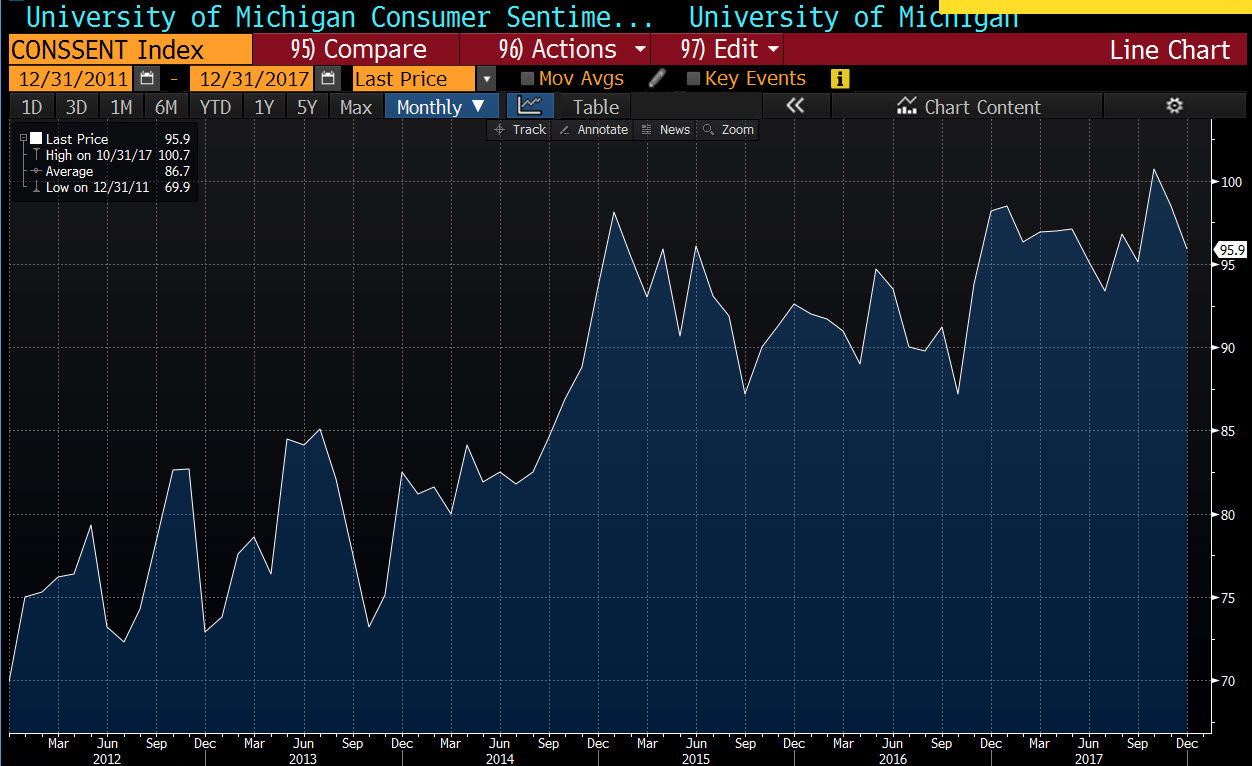First estimate came in at 96.8.
The University of Michigan's consumer sentiment December final came in less than expected at 95.9 versus 97.2 estimate. The first cut of the release was at 96.8.
- current conditions 113.8 versus 115.9 in the prior cut
- expectations 84.3 versus 84.6 in the prior cut
- one-year inflation 2.7% versus 2.8% in the prior cut
- five-year inflation 2.4% versus 2.5% in the prior cut

According to the press release:
- Consumer confidence continued to slowly sink in December, with most of the decline among lower income households.
- The extent of the decline was minor, with the December figure just below the average for 2017 (95.9 versus 96.8). Indeed, the average in 2017 was the highest since 2000, and only during the long expansions of the 1960's and 1990's was confidence significantly higher.
- The recent strength was due to the second highest assessments of current economic conditions since 2000. This strength was offset by a slight increase in uncertainty about future economic prospects.
- Tax reform was spontaneously mentioned by 29% of all respondents, with nearly an equal split between positive and negative impacts on economic prospects.
- Party affiliation was the dominant correlate of people's assessments of the tax legislation, with the long term economic outlook the most negatively affected.
- Buying plans for durables and vehicles remained unchanged at favorable levels.
- Most consumers will know more about the revised tax code when the new paycheck withholding amounts take effect in early 2018. While the mostly small gains in take-home pay may not spark an uptick in optimism, those gains would act to dampen any renewed pessimism.
- Overall, the data indicate that real personal consumption expenditures will expand by 2.6% in 2018.



